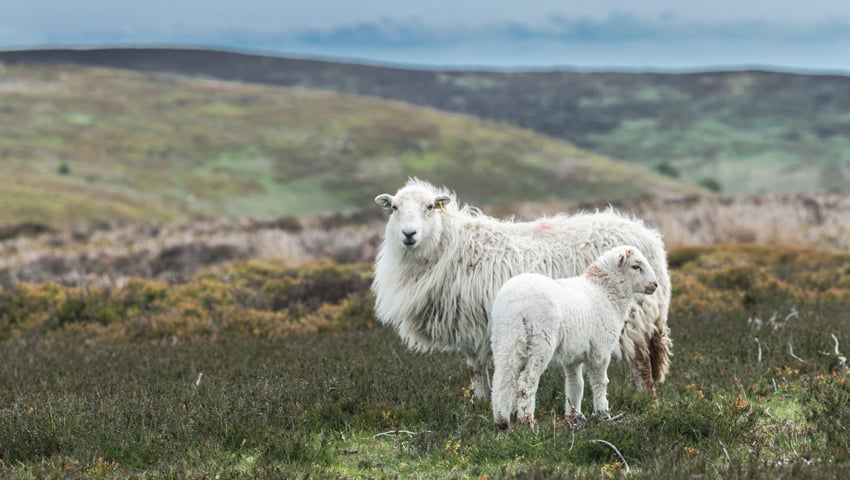PROTEIN-rich peas and beans are replacing concentrates in the winter ration of sheep and cattle at a Radnorshire farm.
Robert Lyon had been mixing a complete diet TMR ration using maize, soya and grass silage for his pregnant ewes at Lower House Farm, a Farming Connect ‘Our Farms’ farm near Llandrindod Wells.
But to increase farm resilience and reduce his farm’s carbon footprint, Robert wants to grow as much of the feed on farm as possible.
Robert has now embarked on a Farming Connect ‘Our Farms’ project to evaluate how peas and beans might help him to achieve that goal.
These pulses can be used in ruminant diets as a useful source of rumen degradable protein and energy, and could provide a solution.
Peas are around 26% crude protein on a dry-matter basis and beans in the region of 29%. At 13.6 to 14 MJ/kgDM, with over 40% starch, they are both high energy feed sources.
This winter, bought-in peas and beans will be incorporated into the diet of up to 600 ewes and 150 Belgian Blue heifers, with levels guided by analysis of the forage they will be fed with.
In 2024, Robert will grow his own bi-crop to include in the 2024/25 ration. He says it will fit well as a break crop in rotation with the 3.6 hectares (ha) of barley he grows every year.
As peas and beans are a nitrogen fixing crop, it will mean he won’t need to apply synthetic nitrogen fertiliser to the crop that follows it and hopes that their tap roots will be good for soil structure too.
Farming Connect will analyse the performance of the ewes and cattle and the financial impact and carbon footprint of peas and beans compared to a controlled diet containing soya.
The cost differential between buying in peas and beans and growing them on-farm is also being assessed.
Dafydd Owen, Mixed Farm Sector Officer for Farming Connect, who is overseeing the project, says there are good reasons why more farms should consider growing more home-grown feed. He said, “Utilising more home-grown feeds can reduce winter feed costs and reliance on imported soya, and improve a farm’s carbon footprint.”
It also alleviates the risk of sudden price increases in purchased feeds, and dependence on chemical fertiliser.
Mr Owen said, “The introduction of a pulse break crop can fit well into a rotation as being a nitrogen fixing crop, no nitrogen fertiliser is required for the subsequent crop.”
Driving these improvements in sustainability at Lower House Farm could also have important Sustainable Land Management outcomes too, by reducing greenhouse gas emissions, maximising carbon storage and sequestration, enhancing the farm’s ecosystem, as well as contributing to high flock and herd health and welfare.
For other farmers who are also keen to grow protein crops, or mixed leys and unsprayed cereals, a new window for the Welsh Government’s Growing for the Environment grant is open until 15 December.
This application window specifically supports the establishment of spring and summer-sown crops which can improve the environmental performance of a farm business.
This article first appeared on the Farming Connect website
